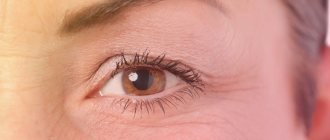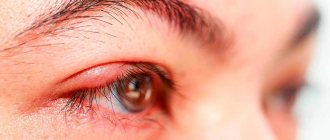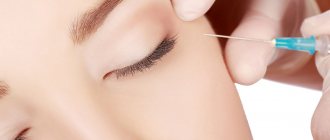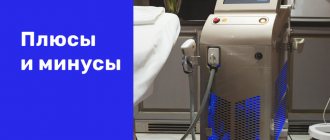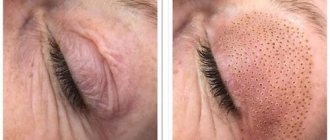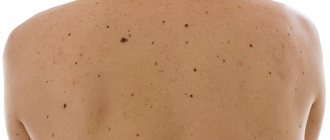What are the indications for the procedure?
As we age, our skin ages, becomes less elastic, loses tone and becomes more flabby. Wrinkles, scars, and in some people even scars appear on the body. In places on the body the skin becomes more saggy. With all these signs, this procedure will be an ideal solution for skin rejuvenation:
- wrinkles of fine and medium depth on the face, neck and décolleté;
- sagging, decreased tone and elasticity of the skin of the face and body;
- treatment of scars (including post-acne) and scars, correction of stretch marks;
- improving the structure, color and tone of the skin;
- skin tightening of the upper and lower eyelids;
- smoothing deep wrinkles and removing fine wrinkles in the perioral area;
- skin rejuvenation in the area of the hands;
- skin tightening in the abdominal area;
- tightening of the inner thighs, as well as shoulders and buttocks.
Clinical examples
Patient 1
During the initial examination, the patient complained of the always tired appearance of the periorbital area in the mornings and evenings. Excess sagging and tone-deprived skin made it impossible to apply neat and harmonious makeup. From the anamnesis: the patient used anti-aging creams and masks. I visited a cosmetologist for injections of botulinum toxin and mesotherapy (4 times a year). After multiple procedures, the patient was not satisfied with the result: the skin remained dry, pigmented and there was a decrease in its turgor. The patient categorically refused to undergo classical blepharoplasty.
Before performing fractional laser resurfacing:
skin without signs of inflammation, pigmented, dry. The “pinch” test in the periorbital area is positive, the skin straightens very weakly, which is characterized by reduced skin turgor.
According to indications, the patient underwent pseudoblepharoplasty, fractional CO2 laser SmartXide DOT2/RF was used, and the D-Pulse™ pulse shape was selected (further in the article a description of all pulse shapes will be given). Device parameters: Power (power) 45 W, Time (exposure time) 300 μs, Spacing (distance) 700 μm (in 3 “Stacks”). Before the manipulation, application anesthesia is applied to the skin around the eyes for 20 minutes. For a more comfortable procedure, an air cooling system was additionally used. A cold air stream (flow level -3) during the procedure cooled the skin before and after fractional laser ablation, step by step. The procedure lasted 10 minutes. The patient felt well. During the period of time that passed, the swelling did not have time to increase. Immediately after the procedure, Bepanten cream was applied in a thick layer to the skin around the eyes, where fractional laser resurfacing was performed.
According to the recommendations, the patient avoided getting water on her face for three days and applied Bepanten cream 3 times a day (morning and evening). The patient began to notice results after the procedure within a month. The appearance of the periorbital area has acquired a fresh look. The skin has shrunk significantly and pigmentation has gone away. Skin turgor has been restored. The pinch test came back negative.
Figure 1(a).
Before the procedure.
Figure 1(b).
The patient underwent pseudoblepharoplasty using a DEKA device using a fractional CO2 laser SmartXide DOT2/RF, using the D-Pulse™ pulse shape.
Patient 2
A 28-year-old young woman came to the clinic with complaints of thin, sagging skin across the entire surface of her face. She was not satisfied with her own appearance in the entire periorbital region: hanging bags over the eyes, the “sad” shape of the palpebral fissure. From the anamnesis: in order to disguise the “pale” color of thin skin, the patient visited a solarium for eight years. The solarium caused xeroderma of the skin to such an extent that for a long time she could not restore skin turgor with any cosmetic masks, creams or injections. When contacted, the patient was ready to perform any surgical and hardware techniques, just to make her skin “shine” again. According to the indications, the patient was asked to undergo laser blepharoplasty of the upper eyelids with fixation of the canthal ligaments of the lateral corner of the eye on both sides. On the third day after removal of the sutures, it is recommended to perform fractional laser resurfacing of the entire face. No contraindications to surgical intervention were identified.
Laser blepharoplasty was performed under local infiltration anesthesia with a 2% ultracaine solution - 2.5 ml was injected subcutaneously into the area of each eyelid. Using the SmartXide DOT2 laser attachment, a laser beam was used to excise a skin flap of the upper eyelid according to preliminary markings on both sides. This allowed this manipulation to be performed quickly, bloodlessly and efficiently. The laser beam in the D-Pulse mode with a power of 5.0 x 20 Hz practically does not “char” the edges of the wound, but during the excision, the shock wave coagulates small capillaries and vessels. Excision of the skin flap takes 5 minutes on each side. After herniotomy, tonification of the orbicularis oculi muscle and canthoplasty, intradermal sutures were applied using PDS 6.0 thread. The seam was treated with Octenisept antiseptic solution. External fixation of the scar was performed with “strip-strip” stickers along the entire contour of the scar for better comparison of skin flaps, which subsequently had a beneficial effect on the formation of a high-quality scar.
On the third day, the sutures were removed in the upper eyelid area. After application of topical anesthesia for 20 minutes, laser fractional resurfacing was performed using the SmartXide DOT2/RF device using the D-Pulse™ pulse shape. Device parameters: Power (power) “55 W, Time (exposure time) 200 μs, Spacing (distance) 900 μm (in 3 “Stacks”). For a more comfortable procedure, an air cooling system was additionally used. The procedure lasted 40 minutes. During the entire procedure, the patient felt satisfactory. Pain sensations were assessed as “tolerable”. Immediately after the procedure, Bepanten cream was applied to the entire skin of the face in a thick layer. After the procedure, swelling was minimal. The patient was bothered by moderate pain and pulling sensations in the facial area. On the first day in the morning the swelling increased to its maximum. The patient followed all the recommendations: for 3 days she avoided getting water on her face and applied Bepanten cream up to five times a day (morning and evening).
A routine examination of the patient took place on the seventh day after the procedure. Her skin and eyes “shone.” After the manipulations, the skin became elastic, pigmentation disappeared. Against the general background of the face, the skin has tightened well. During the healing process, the scars formed normotrophic, thin and light. The appearance of the periorbital area has become more expressive and harmonious. The patient herself
.
Figure 2(a).
Before the procedure.
Figure 2(b).
The appearance of the patient before laser blepharoplasty of the upper eyelids with fixation of the canthal ligaments of the lateral corner of the eye on both sides (photographs from above) and 7 days after fractional laser resurfacing, the D-Pulse™ pulse shape was used.
What are the advantages of laser removal technology?
There are many ways to rejuvenate the skin or correct its defects, but only laser technology can do this quickly, absolutely sterilely, without blood, practically painlessly (anesthesia is available if the skin is hypersensitive) and with everything - only problem areas of the skin are removed. Advantages of the procedure:
- Only damaged skin is removed;
- painless procedure, additional anesthesia is possible;
- the operation is bloodless, since the laser coagulates blood vessels;
- minimal risk of inflammation due to the absolute sterility of the laser;
- removal of tumors is carried out in one session.
Individual selection of pulse shape
SmartPulse™ Pulse Shape
Scheme 1.
SmartPulse™ pulse shape (S-pulse).
SmartPulse technology allows you to generate fully controlled laser pulses, combining both ablative and stimulating components, creating ideal conditions for the procedure. Thanks to this, there is no need to make two separate impulses to the same place on the skin with resetting the radiation parameters, which could lead to complications in the form of post-inflammatory hyperpigmentation after the manipulation.
Ablation.
Vaporization of the epidermis (the upper layers of the skin with a reduced water content) occurs during the first part of the pulse, releasing a large amount of energy in a short period of time.
Thermal effect.
After instant vaporization of the epidermis, the pulse energy is transferred in the form of heat to the deep layers of the dermis (saturated with water), stimulating the formation of new collagen, and an immediate “tightening” effect. At the same time, damage to the epidermis remains minimal, and the rehabilitation period is significantly reduced.
This pulse shape is ideal for thick skin.
D-Pulse™ Pulse Shape
Scheme 2.
D-Pulse™ pulse shape.
SmartPulse consists of a high pulse peak and an independent thermal follow-up. D-Pulse™ is very important when it is necessary to evaporate only a thin layer of skin and transfer heat to the deepest layers, due to the lack of a smooth transition from ablation to stimulation.
The second variable part, with lower peak power and longer irradiation time, allows the laser energy to travel deeper and produce instant compression, stimulating the synthesis of new collagen.
D-Pulse is convenient for performing laser blepharoplasty at the stage of excision of a skin flap and subcutaneous connective tissue structures.
In our own observations, we did not note burns or burning of wound edges; this had a beneficial effect on the scarring processes. Intraoperative time was reduced thanks to laser hemostasis and rapid laser excision of tissue, in accordance with preoperative markings. Postoperative rehabilitation was reduced, since swelling and hematomas were minimal (compared to classic blepharoplasty).
This pulse shape is ideal for thin skin.
H-Pulse™ Pulse Shape
Scheme 3.
H-Pulse™ pulse shape.
Unique pulse shape without thermal effect.
U-Pulse™ Pulse Shape
The U-shaped pulse, the ideal pulse for otolaryngology microsurgery, should have the highest peak power and short duration to minimize thermal tissue damage.
Scheme 4.
U-Pulse™ pulse shape.
Scheme 5.
Selection of pulses according to skin type.
Are there any contraindications?
This procedure, like any other, has its contraindications. It is important to discuss all possible risk factors with your doctor during your consultation. First of all, you should draw the doctor’s attention to possible skin diseases, herpes and infections during an exacerbation, all kinds of chronic diseases and others:
- active skin diseases;
- herpetic and infectious processes during exacerbation;
- chronic diseases in the acute stage;
- mental disorders;
- tendency to form keloid;
- oncological diseases;
- taking anticoagulants, retinoids, photosensitizers, antidepressants, drugs affecting the central nervous system.
You can check the entire list of contraindications with your doctor during your consultation.
New pulse shapes for CO2 laser
When performing classic blepharoplasty with a scalpel, errors in skin excision are often encountered; this is due to the erasure of the preoperative markings at the time of fixation of the skin flap with fingers. Every plastic surgeon has to deal with bleeding from capillaries of different diameters, increasing tissue edema, which makes it difficult to objectively assess the effectiveness of the manipulations performed, namely, sufficient excision of a skin flap, resection of the orbicularis oculi muscle with its toning. As a result, during the operation, each manipulation increases in time. As you know, the more we coagulate the vessels and capillaries, the more we “burn” the soft tissues, which negatively affects the wound healing process. All of the above negative aspects of classical blepharoplasty prompted us to search for a new type of surgical approach, namely the use of laser technologies.
SmartXide DOT2/RF is introduced as the first and only CO2 laser system with exclusive new pulse shape technology, providing complete modularity of pulse shapes: S-pulse, D-pulse and H-pulse, which combine with continuous wave (CW) mode to improve surgical possibilities of a CO2 laser during blepharoplasty and pseudoblepharoplasty. The SmartXide DOT2/RF laser system from the Italian company DEKA is designed and intended for use in aesthetic medicine and plastic surgery; it is the first to introduce the combined action of a carbon dioxide laser with radio frequency, which can effectively and safely prevent age-related changes and skin damage9.
Benefits of SmartXide DOT
SmartXide DOT is a real revolution in cosmetology! You do not need any preliminary preparation before the procedure; the method itself is universal, fast and painless. After the procedure, you will almost immediately see the result, which will be long-lasting and lasting. All benefits:
- noticeable results immediately after the first session;
- universal method of rejuvenation;
- rapid skin regeneration (3–4 days);
- the DOT therapy procedure gives a stable and long-lasting result;
- quick procedure (30–40 min);
- no preliminary preparation is needed;
- The procedure is ideal for both rough and soft skin (eyelids, hands, etc.)
Discussion
The use of a fractional CO2 laser implies a flexible approach to the choice of exposure parameters, namely, the following will be important:
- Indications for performing manipulation
- Determining skin type
- Objective assessment of the severity of age-related skin changes in the periorbital area
- General physical health of the patient
In other words, the shape of the pulse, the power of exposure, the distance between points, the time of exposure, the duration and depth of penetration of the laser pulse, the power and time of exposure to radio frequency radiation are selected strictly individually.
The SmartXide DOT2/RF laser system with exclusive pulse shape technology provides full modularity of pulse shapes: S-pulse, D-pulse, H-pulse, which are combined with continuous wave (CW) mode to expand the surgical capabilities of the CO2 laser during pseudo- and blepharoplasty. .
